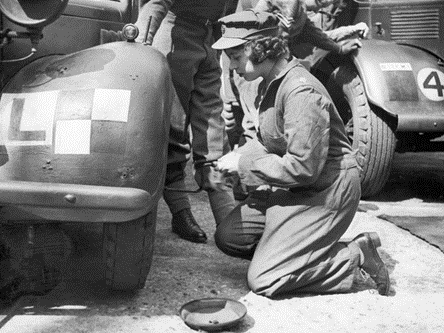There is no doubt that the dial is shifting and long-held attitudes about women working in ‘non-traditional’ trades are being challenged. The reality is that jobs do not have a gender and now it feels somewhat absurd to think that they ever did.
With the current skills shortage, employers are finally seeing the benefits of an inclusive workforce and actively recruiting women to fill the gaps, not unlike the way countries at war have done in the past. If Queen Elizabeth II can insist on joining the Auxiliary Territorial Service as a truck mechanic and driver during WWII in 1945, it’s a little startling that we haven’t seen greater change, sooner!
At the same time, there is also no denying that engaging in a hands-on skilled trade is more physically demanding than most, more traditional, roles undertaken by women in the past.
It’s perhaps a good time to unpack this and ensure that all those identifying as women have no illusions as to what they can expect, and to ensure a thorough understanding of the real issues faced when commencing a trade. It’s also important to recognise that, if there is an issue to be addressed, it’s very likely not really a gendered problem at all, but one that is already an unacceptable situation needing redress, often for both men and women.
Most women entering a trade, or any job that requires you to physically exert yourself, understand only too well that it is going to require an adjustment period. Despite how fit you might be, how much you safely carry, or whether you are a male or female, you will suddenly be utilising muscles that may not have previously been challenged. Each tool used and task undertaken might affect you differently and in the first weeks and months may well leave you sore, aching, numb and wondering how you will carry on! But it’s likely that what felt impossible at first, will become easier with time and not be an issue once the body has adjusted. Realistically, this is not a gendered problem, though it is frequently perceived that way.
Need more convincing? Read about Ali’s experience when she first started her painting trade, or Amy, an apprentice bricklayer, and how both women adjusted fairly quickly to the physicality of their roles.
Your role might require heavy lifting, elbow grease, getting dirty and working in confined spaces. While these tasks are not for the physically or mentally weak, sound Workplace Health and Safety practices mean strict risk assessment protocols should be observed for the protection of all employees. For example, modern material handling and advancement in tools and mechanical assistance mean that lifting is not the barrier to work for women that it may once have been. The fact is that both women and men come in all shapes and sizes, right? There is only so much that one individual should be lifting, and everyone will, at times, require assistance.
Working in the outdoors, in the extremes of the heat or the cold can also be overwhelming to start with, and dangerous if not managed properly for either men or women.
Even just the change to the early tradie hours will be a significant challenge for many to adjust to, without venturing into other practical issues, like the lack of childcare at that time of day.
The truth is that the real barriers are likely other concerns like appropriate bathrooms and other highly correctable issues like properly fitting PPE equipment or uniforms. (Have you ever seen work trousers come with an elastic maternity waist? No, me either).
Perhaps more concerning than the demands and risks of the physical aspect of skilled trades, is the very clear risk present for psychosocial injury, with the acknowledgement that this is certainly not limited to women on site. However, gender bias, discrimination, bullying, intimidation, sexual harassment, isolation and the need to overcompensate in performance to be taken seriously, are clear and present dangers for women in the trades. Mentoring support for women to help them navigate some of these issues is great, but they are not typically the origin of these problems, so it can only help so much. It is more likely the culture, the work environments and the attitudes and behaviours of employers and colleagues that need modifying, and this comes down to education and understanding.
So, yes, of course there are many aspects of skilled trades work that require adaptation and adjustment by the female apprentice. And there will be times when they pull the pin because they’re not prepared to accept the physically demanding side of the work and that’s fine; it’s not for everyone. Apart from addressing the practical and physical concerns, workplaces need to shine a very bright light on the often-overlooked issues which are potentially creating far greater risks and impacts for women choosing to enter a non-traditional trade. After all, the benefits of a gender-diverse workforce, not just in addressing skills shortages but in creating more balanced workplace cultures, far outweighs sticking to outdated mentalities about gender-specific work roles.

At the age of 19, determined to ‘do her bit’ Princess Elizabeth joined the Auxiliary Territorial Service (ATS) and qualified as a driver and mechanic with the rank of Second Subaltern. (Image from Universal History Archive/Getty Images).
Article written by Caroline Miall, BUSY Sisters Mentor.
